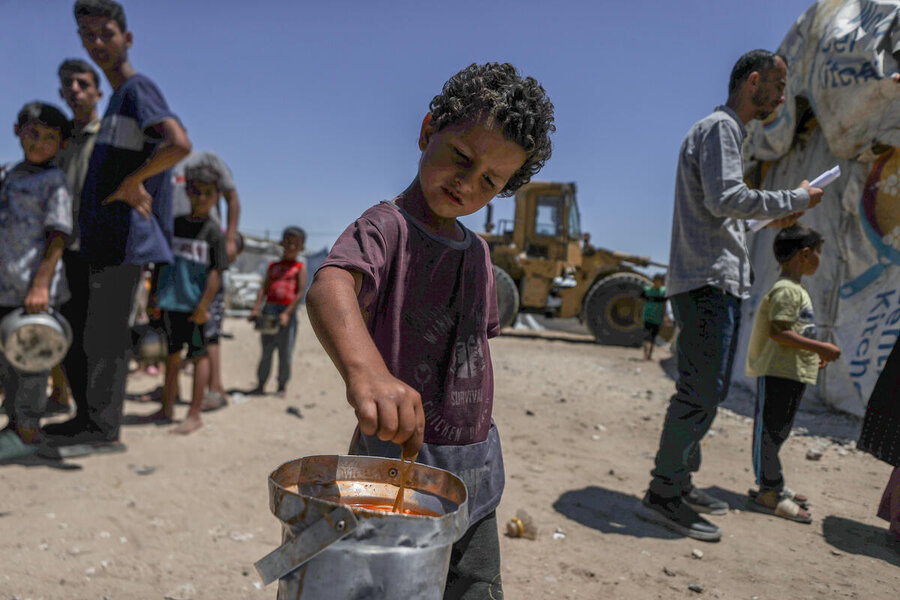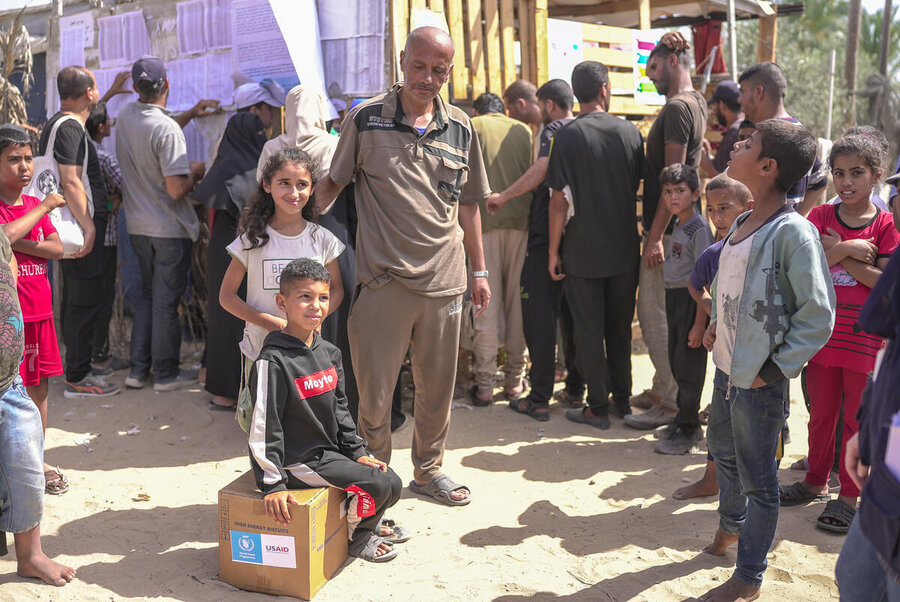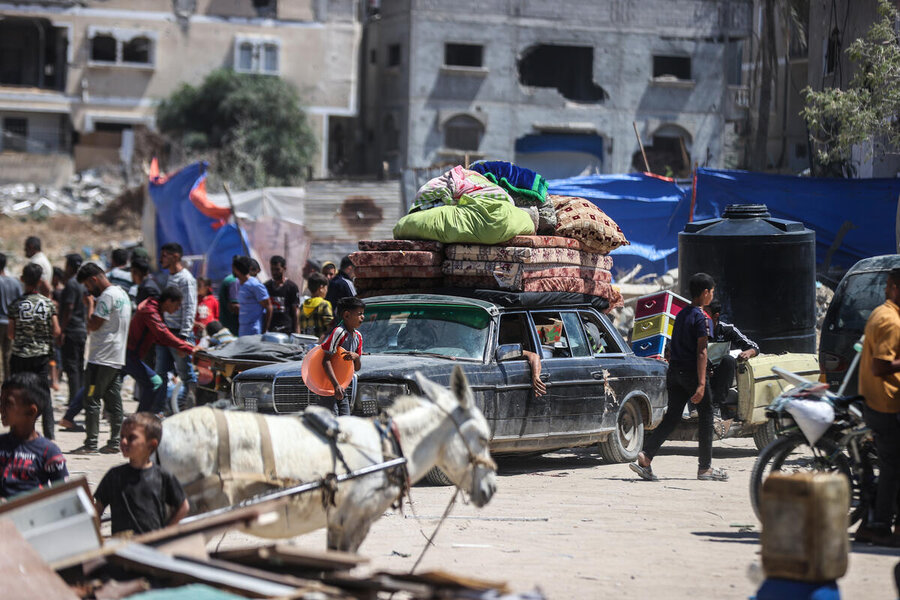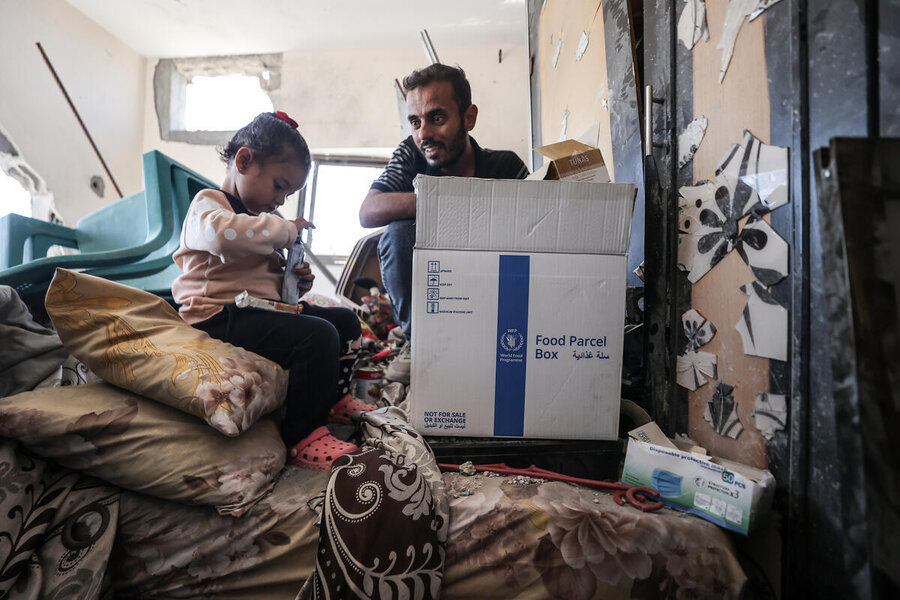
CLICK TO VIEW: LATEST NEWS RELEASES
Updated 29 May 15:40 CEST (Previous updates: 22 May, 17 May)
The Israeli incursion in Rafah is having a devastating impact on civilians and humanitarian operations. Adults and children are beyond exhausted from constant displacement, hunger, and fear
They are desperate for the war to end - as are humanitarian workers on the ground, who are largely displaced and dispersed along with the people they are meant to serve.
There is little the World Food Programme (WFP) can currently do in Rafah, with stocks very low and mobility severely restricted.
- WFP backs UN Secretary-General António Guterres's call for an immediate ceasefire in Gaza.
- We call for the protection of humanitarian spaces so we can do our work.
- Further escalation in the conflict in Gaza could deepen a humanitarian catastrophe and bring aid operations to a standstill.
- All parties must ensure regular humanitarian access until a ceasefire is agreed.
- WFP and other aid agencies are struggling to access humanitarian aid, particularly from the Karam Abu Salem/Kerem Shalom crossing, due to the active conflict, impassable roads, unexploded ordnance, fuel shortages, delays at checkpoints, and Israeli restrictions.

A distribution of high-energy biscuits from WFP in Gaza. Photo: WFP/Jaber Badwan - We need Israeli authorities to facilitate pick-up and delivery of humanitarian supplies entering Kerem Shalom - the opening of a border crossing is not enough.
- Despite the arrival of some commercial goods in Gaza, people cannot afford the high prices. We need more aid to enter through the south because people need dietary diversity, access to healthcare, and water. The situation requires a full multi-sector and strategically balanced response.
- Fuel remains a major concern for humanitarian operations. Without a consistent fuel supply, everything stops: trucks, hospitals, generators for hospitals, sewage pumping systems, and desalination systems.
- WFP noted Sunday (26 May) that lifesaving humanitarian assistance and fuel from Egypt had crossed into Gaza through the Karam Abu Salem/Kerem Shalom crossing. This is an important step, but we need sustained access. We need all border crossings and crossing points within Gaza to be open.

Families make their way out of Rafah. Photo: WFP/Ali Jadallah - Constrained access to southern parts of Gaza risks causing the same catastrophic levels of hunger witnessed in the north.
- Northern Gaza, which has been the epicenter of famine warnings, is now improving because of the access granted in the past month. However, in central and southern Gaza hunger levels are deteriorating fast.
- Humanitarian organizations need full, safe and unhindered access to reach all civilians in need across Gaza. (West Erez is functional, but not reliable. Gate 96 and Erez are inaccessible.)
- We need a conducive environment for partners, including UN agencies and the wider humanitarian community, to access people and scale up to meet their needs. WFP cannot do this alone.

A family back in what remains of their home in Khan Younis after fleeing Rafah - however, many have nowhere to go to. Photo: WFP/Ali Jadallah
WFP continues to distribute food aid despite significant challenges and dwindling food stocks. Since the beginning of May, WFP has provided assistance to 1 million people in Gaza.






